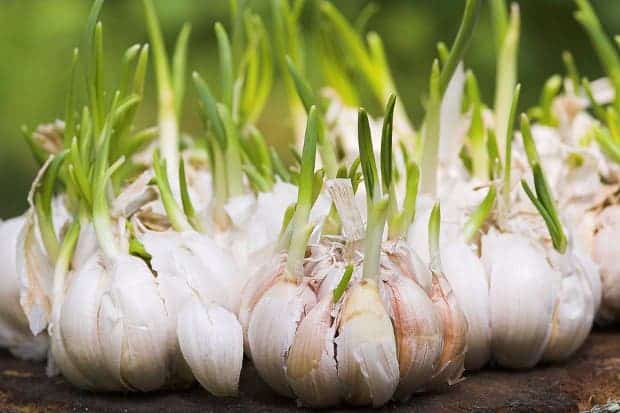A 1,000 year old Anglo-Saxon ‘eye salve’ made from onion, garlic, wine and part of a cow’s stomach wipes out 90 percent of antibiotic-resistant Staphylococcus aureus (MRSA) – much better than most modern antibiotics. It also does a great job at treating styes, small abscesses on the eyelid.
“Take cropleek and garlic, of both equal quantities, pound them well together… take wine and bullocks gall, mix with the leek… let it stand nine days in the brass vessel…” – so goes a thousand year old Anglo-Saxon recipe to vanquish a stye, an infected eyelash follicle. The 9th Century ‘eye salve’ recipe was found in a manuscript in the British Library. Initially, linguists had to translate it from ye olde Anglo Saxon, and then other researchers recreated it and tested its efficiency. They were absolutely shocked to see just how effective it was.
“We did not see this coming at all,” said microbiologist Freya Harrison, the lead researcher, in the press video below. “We thought that Bald’s eye salve might show a small amount of antibiotic activity. … But we were absolutely blown away by just how effective the combination of ingredients was,” she added in a press release.
Recreating an ancient potion
Of course, creating a millennium old potion is no easy feat – even after figuring out all the needed ingredients, they still needed to find them – and finding authentic ingredients can be quite difficult in the modern world. They had to hope for the best with the leeks and garlic because modern crop varieties are likely to be quite different to ancient ones, even the organic and heritage ones. The recipe also mentioned brass vessels, which are hard and expensive to find at the moment, so the team used glass bottles with squares of brass sheet immersed in the mixture. Bullocks gall was easy, though, as cow’s bile salts are sold as a supplement for people who have had their gall bladders removed. Wine was also do-able – they used wine from a vineyard that existed since the 9th century.
The full, translated recipe is:
- Equal amounts of garlic and another allium (onion or leek), finely chopped and crushed in a mortar for two minutes.
- Add 25ml (0.87 fl oz) of English wine – in this case, taken from a historic vineyard near Glastonbury.
- Dissolve bovine salts in distilled water, add and then keep chilled for nine days at 4 degrees Celsius before straining through a cloth to remove particulates.
It was a crazy idea – just crazy enough to work. Taken individually, the ingredients had little effect on MRSA, but together, it was almost like magic. But after nine days of stewing together, the potion had killed all the soil bacteria introduced by the leek and garlic.
“It was self-sterilising,” says Harrison. “That was the first inkling that this crazy idea just might have some use.”
Ancient medicine, modern problems
The medicine worked so good, that researchers actually wanted to see how it does against MRSA – antibiotic resistant cultures of bacteria that are very hard to deal with, even with the most powerful antibiotics. They shipped the concoction to United States where it was tested on in vivo mouse wounds as a topical treatment. It wiped out most of the MRSA cells after just 24 hours – even better than modern antibiotics. Vancomycin, the antibiotic generally used for MRSA, had comparable results.
The team presented their findings at the Annual Conference of the Society for General Microbiology, in Birmingham, on Monday. However, they still don’t know how it works – and why.
“The big challenge is trying to find out why that combination works,” says Steve Diggle, another of the researchers.
The fact that you need to wait 9 days for it to become active doesn’t make things easier – the entire lab smelled like garlic by the time everything was done.
“With the nine-day waiting period, the preparation turned into a kind of loathsome, odorous slime,” says Michael Drout of Wheaton College in Norton, Massachusetts.
But even so, it’s worth it. MRSA is a growing problem, which a recent report has predicted will kill 300 million people by 2050. Finding something that deals with this problem, especially something so simple and cheap could be monumental.












